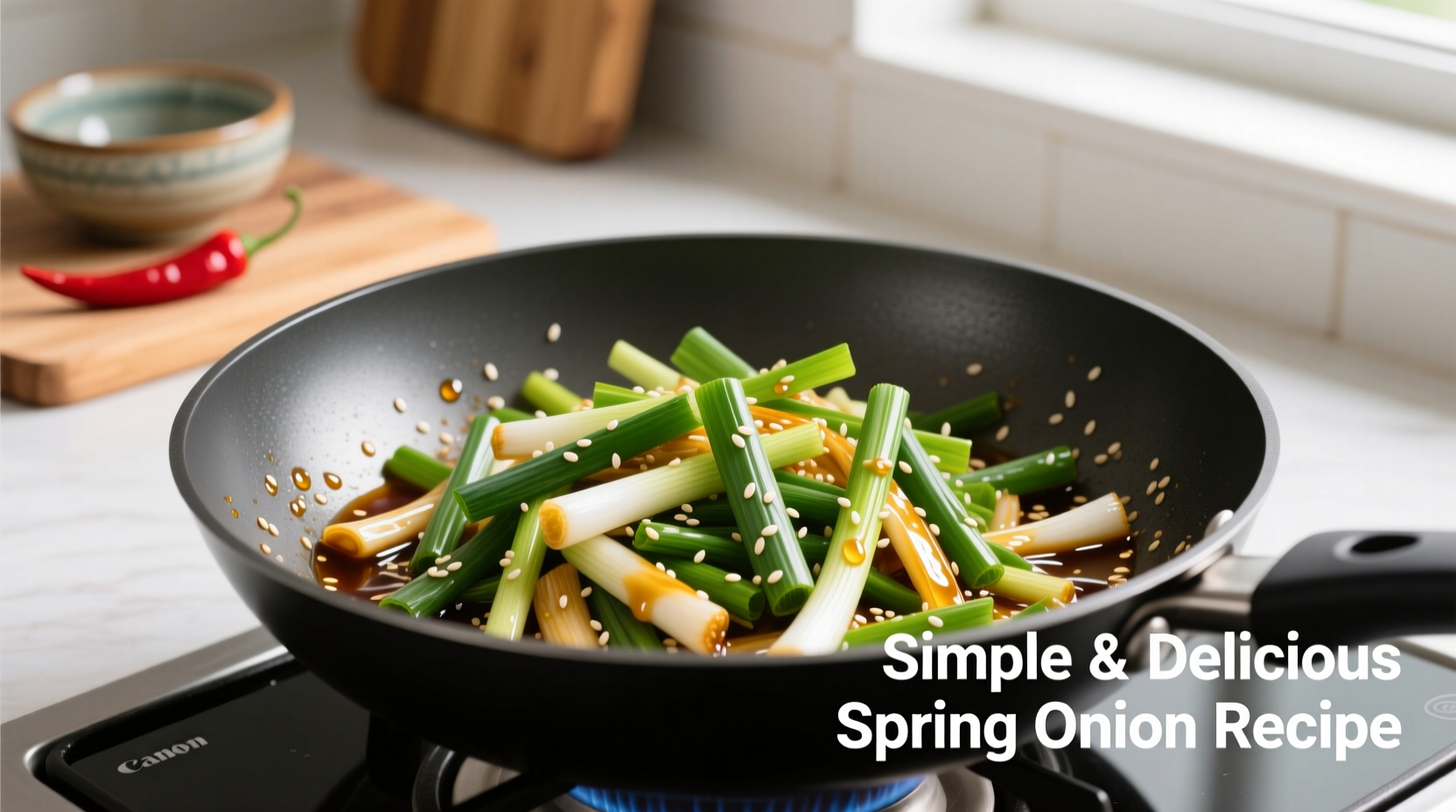Spring onions aren't just garnish—they're culinary powerhouses that add vibrant flavor to countless dishes. According to USDA nutritional data, just one cup of chopped spring onions provides 116% of your daily vitamin C needs and contains beneficial antioxidants like allicin, which forms when the bulbs are cut or crushed.
Why Spring Onions Deserve Center Stage
Often overlooked in favor of their mature onion cousins, spring onions offer a unique flavor profile that bridges the gap between mild scallions and pungent bulb onions. The seasonal availability of spring onions runs from early spring through mid-summer, making them perfect for fresh, light cooking. Unlike storage onions, spring onions contain more water and less sulfur compounds, resulting in a milder, sweeter taste that works beautifully both raw and cooked.
| Spring Onion Component | Best Cooking Method | Flavor Profile |
|---|---|---|
| White bulb | Sautéed or roasted | Sharp, pungent when raw; sweetens when cooked |
| Green stalks | Raw or quick-cooked | Mild, grassy, with subtle onion flavor |
| Root ends | Discard or compost | Bitter, fibrous |
Mastering Spring Onion Preparation
Professional chefs at the Culinary Institute of America emphasize that proper preparation makes all the difference with spring onions. Start by trimming just the very end of the roots and any wilted green tips. Wash thoroughly in cold water, separating the layers of the white bulb to remove any trapped dirt. For most recipes, slice crosswise into ¼-inch pieces, keeping the white and green parts separate as they cook at different rates.
When storing spring onions, the FDA recommends placing them root-end down in a glass of water and covering loosely with a plastic bag in your refrigerator. This method maintains crispness for up to two weeks—significantly longer than traditional storage methods. Change the water every two days for best results.

Weeknight Dinner Solutions
5-Minute Spring Onion Stir Fry
This easy spring onion recipe for beginners comes together faster than takeout. Heat 1 tablespoon sesame oil in a wok over high heat. Add 8 sliced spring onions (white parts first, greens 30 seconds later), 2 minced garlic cloves, and 1 tablespoon grated ginger. Stir-fry 1 minute, then add 1 cup cooked protein of choice and 2 tablespoons soy sauce. Toss to combine and serve over rice.
Spring Onion & Potato Hash
Perfect for using up leftover roasted potatoes, this dish transforms simple ingredients into something special. Sauté 10 sliced spring onions in olive oil until golden, then add 2 cups diced potatoes and cook until crispy. Season with smoked paprika and finish with a splash of apple cider vinegar for brightness.
Weekend Cooking Projects
Spring Onion Pancakes
These flaky Chinese-inspired pancakes showcase spring onions beautifully. Combine 2 cups flour, ¾ cup water, and ½ teaspoon salt to form a dough. Roll thin, brush with sesame oil, and sprinkle generously with 15 sliced spring onions. Roll into a log, coil, flatten, and pan-fry until golden and crisp.
Spring Onion & Goat Cheese Tart
Create an elegant centerpiece for brunch with this simple tart. Blind-bake a 9-inch pie crust, then fill with a mixture of 4 oz goat cheese, 2 eggs, ½ cup cream, and 10 thinly sliced spring onions. Bake at 375°F until set (about 25 minutes). The spring onions caramelize slightly, creating pockets of sweet, savory flavor throughout the creamy filling.
Special Occasion Showstoppers
Seared Scallops with Spring Onion Puree
Elevate dinner party fare with this restaurant-quality dish. Sauté 15 spring onions until very soft, then blend with 2 tablespoons butter and ¼ cup stock until smooth. Season with salt and white pepper. Sear scallops in hot oil until golden, then serve atop the puree with a drizzle of lemon oil.
Troubleshooting Common Spring Onion Issues
Problem: Spring onions become limp too quickly
Solution: Store them properly as recommended by food safety experts—root-end down in water with a loose plastic covering in the refrigerator.
Problem: Green parts turn slimy after cooking
Solution: Add green parts during the last 30-60 seconds of cooking. Their delicate texture requires minimal heat exposure.
Problem: Overpowering raw onion flavor in salads
Solution: Try the chef's trick of soaking sliced spring onions in ice water for 10 minutes to mellow their bite while maintaining crisp texture.
Seasonal Recipe Planning
Spring onions reach peak flavor and availability from March through June in most temperate climates. During this window, they're at their sweetest and most tender. As summer progresses, they develop stronger flavors and become more fibrous. When selecting spring onions, look for firm white bulbs with crisp, vibrant green tops. Avoid any with yellowing or slimy spots, which indicate age or improper storage.
FAQ: Spring Onion Cooking Questions
Can I substitute regular onions for spring onions?
While possible, the flavor profile differs significantly. For every 1 cup of spring onions, use ½ cup finely diced yellow onion plus 2 tablespoons chopped chives to approximate the mild flavor and texture.
How do I prevent tears when cutting spring onions?
Chill spring onions in the refrigerator for 30 minutes before cutting. The cold temperature reduces the release of sulfur compounds that cause eye irritation.
What's the difference between spring onions and scallions?
Spring onions have a small, developed bulb while scallions have a more uniform cylindrical shape without a pronounced bulb. Spring onions are slightly sweeter and milder than scallions.











 浙公网安备
33010002000092号
浙公网安备
33010002000092号 浙B2-20120091-4
浙B2-20120091-4